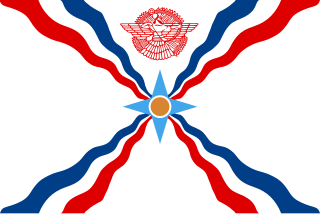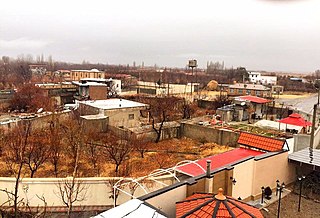This article contains a brief list of press headlines relevant to the Assyrian genocide in chronological order, as recorded in newspaper archives.
| Headlines from Newspapers | Date | Page |
|---|---|---|
| Report Christians in Peril in Turkey, The New York Times | November 12, 1914 | |
| Massacred by Kurds. Christians Unable to Flee from Urmia Put to Death, Washington Post | March 14, 1915 | p. 10 |
| Turks Advise Christians to Flee. Fear of General Massacre in Constantinople if Allied Fleet Passes Dardanelles. The New York Times | January 11, 1915 | |
| Christians in Great Peril. Talaat Bey Declares That There is Room Only for Turks in Turkey. The New York Times | January 13, 1915 | |
| U.S. Aappeal to Turks, The Washington Post | March 25, 1915 | p. 2 |
| Massacres Kept Up. 20,000 Christians Killed or Missing in Persia. Washington Post | March 26, 1915 | p. 1 |
| More Violence by Turks, Los Angeles Times | March 27, 1915 | p. II-1 |
| Christians in Danger. Fearing New Massacre by Kurds, State Department Acts, Washington Post | March 27, 1915 | p. 1 |
| Dragged Out to Die, The Washington Post | March 27, 1915 | p. 5 |
| Native Christians Massacred; Frightful Atrocities in Persia, Los Angeles Times | April 2, 1915 | p. I-1 |
| Turks Kill Hundreds. More than 700 Christians Slain and Mutilated at Haftdewan. 800 Victims in Urumiah. Washington Post | April 2, 1915 | |
| Fled Kurd Massacres, The Washington Post | April 4, 1915 | p. 3 |
| 40 Die Daily in Mission. Mortality Among 10,000 Refugees at Urumiah Appalling. Washington Post | April 11, 1915 | p.R4 |
| Turks Kill Christians, The Washington Post | April 25, 1915 | p. 1 |
| Kurds Massacre More Armenians. Flight from Persia-Full of Suffering for Those Who Escaped the Sword. The New York Times | April 26, 1915 | |
| Says Turks Aided Recent Massacres, The New York Times | April 29, 1915 | |
| Await Epulsion of Kurds. Thousands of Christians Want to Return to Persia, The New York Times | May 2, 1915 | |
| People Flee From Kurds. Thousands of Assyrians Are Forced from Homes, Los Angeles Times | May 3, 1915 | p. I-2 |
| Kill 10,000 Christians, The Washington Post | May 16, 1915 | p. 15 |
| Urumiah Massacres. Death of 12,000 Nestorian Christians, The Times (London) | October 9, 1915 | |
| Turkish Horrors in Persia, New York Times | October 11, 1915 | |
| The Assassination of a Race, The Independent | October 18, 1915 | |
| 25,000 Syrians Starving, The New York Times | October 30, 1915 | |
| Decline of Ancient Assyrian Church. Results of Kurdish Tyranny. The Times (London) | November 13, 1915 | |
| What Father Dakras Saw of Massacres in Turkey, Washington Post | November 28, 1915 | p.M5-8 |
| Paul Shimmon, The Plight of Assyria. Needs of Christian and Kurd in That War-Ravaged Country. The New York Times | September 18, 1916 | p.12 |
| H.P. Packard, Letter to the editor, New York Times | September 18, 1916 | p.12 |
| Relief Is Urged for Assyrians, The Los Angeles Times | November 13, 1916 | p.13 |
| Murder of Mar Shimun, The New York Times | April 15, 1918 | |
| Morgenthau Urges Carving of Turkey, The Los Angeles Times | December 12, 1918 | p.I1 |
| Syrian Tells of Atrocities, Los Angeles Times | December 15, 1918 | p.I-1 |
| Assyro-Chaldean Delegation to Paris to Plead for a State, The Times (London) | March 19, 1919 | |
| President Appeals for Help for Armenians and Syrians, The Wall Street Journal | October 29, 1917 | p.3 |
| Chaldean Victims of the Turks, The Times (London) | November 22, 1919 | p.11 |
| Assyrians’ War Sufferings, The Times (London) | June 15, 1920 | |
| Paul Shimmun, Assyrian Immigration, The New York Times | June 4, 1922 | p.105 |
| Morgenthau Calls for Check on Turks; Says Their Devilish Scheme for Annihilation of Other Races Must Not Go On | September 5, 1922 | p.3 |
| Allies Abandoning Minorities' Cause, The New York Times | January 10, 1923 | p. 4 |
| Better Feeling in Conference, The New York Times | January 10, 1923 | p. 4 |
| Greater Tension Felt at Lausanne, The New York Times | January 21, 1923 | p. 2 |
| George Seldes, Chaldeans Outraged as Massacred by Turks, Los Angeles Times | October 25, 1925 | p. 1 |
| Turkish Atrocities Shock the League. Britain Gets Mosul. The New York Times | December 16, 1925 | p. 1 |
| Bishops Protest Treaty with Turks, New York Times | April 5, 1926 | p. 21 |











